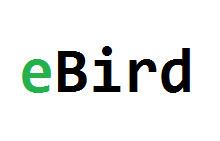Launched 2002 | Website eBird Current status Active | |
 | ||
Available in English, Spanish, French, German, Portuguese, Chinese, Turkish, Russian, Norwegian Bokmål Created by | ||
eBird is an online database of bird observations providing scientists, researchers and amateur naturalists with real-time data about bird distribution and abundance. Originally restricted to sightings from the Western Hemisphere, it was widened to include New Zealand in 2008, and was widened to cover the whole world in June 2010. eBird has been described as an ambitious example of enlisting amateurs to gather data on biodiversity for use in science.
Contents
eBird is an example of crowdsourcing, and has been hailed as an example of democratizing science, treating citizens as scientists, allowing the public to access and use their own data and the collective data generated by others.
History and purpose
Launched in 2002 by the Cornell Lab of Ornithology at Cornell University and the National Audubon Society, eBird gathers basic data on bird abundance and distribution at a variety of spatial and temporal scales. As of November 2016, over 330,000 unique users have submitted over 26 million checklists, more than 366 million observations, and data for over 10,300 species to the program.
eBird’s goal is to maximize the utility and accessibility of the vast numbers of bird observations made each year by recreational and professional bird watchers. The observations of each participant join those of others in an international network. The data are then available via internet queries in a variety of formats.
Features
eBird documents the presence or absence of species, as well as bird abundance through checklist data. A web interface allows participants to submit their observations or view results via interactive queries of the database. Internet tools maintain personal bird records and enable users to visualize data with interactive maps, graphs, and bar charts. All these features are available in English, Spanish, French, German, Portuguese, Brazilian Portuguese, Traditional Chinese, Turkish, Russian, and Norwegian Bokmål.
It is a free service. Data are stored in a secure facility and archived daily, and is accessible to anyone via the eBird web site and other applications developed by the global biodiversity information community. For example, eBird data are part of the Avian Knowledge Network (AKN)[1], which integrates observational data on bird populations across the western hemisphere and is a data source for the digital ornithological reference Birds of North America. In turn, the AKN feeds eBird data to international biodiversity data systems, such as the Global Biodiversity Information Facility.
Electronic kiosks
In addition to accepting records submitted from users' personal computers and mobile devices, eBird has placed electronic kiosks in prime birding locations, including one in the education center at the J. N. "Ding" Darling National Wildlife Refuge on Sanibel Island in Florida.
Research using eBird data
Below is an incomplete list of research that used the eBird data.
Fink, Daniel; et al. (2010). "Spatiotemporal exploratory models for broad-scale survey data". Ecological Applications. 20 (8): 2131–2147. doi:10.1890/09-1340.1.
Hurlbert, Allen H.; Liang, Zhongei (February 2012), "Spatiotemporal Variation in Avian Migration Phenology: Citizen Science Reveals Effects of Climate Change", PLoS ONE, 7 (2): e31662, doi:10.1371/journal.pone.0031662
